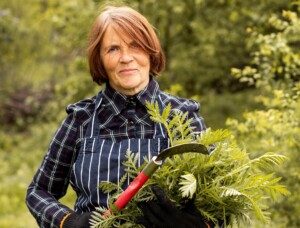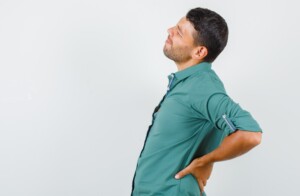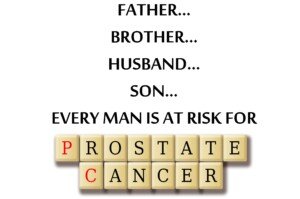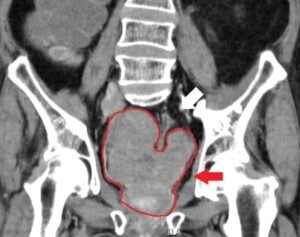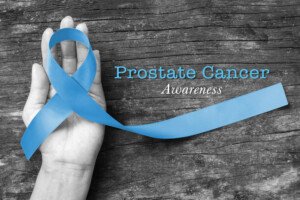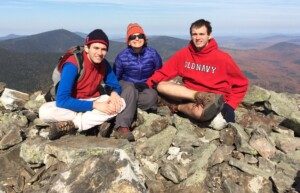I was inspired to cover this topic when my “weed man” said there was no way he could pull my many big weeds from their roots: “I’m 52,” he said.
Instead he used a sit-down mower. And that’s fine; it’s my new home and I just wanted the numerous huge weeds under control.
But it got me thinking: Is 50s too old to pull a bunch of big weeds?
Ironically, this man looks like he’s in better shape than most men half his age.
His physique is V-taper and it appears he does gym workouts. He’s not bulky or like a bodybuilder, but no 52-year-old man is buff without some form of consistent weight-bearing activity.
He had mentioned over the phone that he’ll pull weeds for $100, so it’s not at though pulling isn’t part of his side-business of lawn maintenance.
But I guess when he saw my weeds, he had second thoughts, even though pulling out their roots would completely rid these unsightly growths, vs. simply shaving them down with a tractor mower.
Now here’s the thing: I myself have already pulled quite a few of these bushy weeds, from their roots, without straining my body – and I’m 62.
Some of the species can’t be uprooted with just pulling, so I ignored those.
But I had no issue uprooting the other types of weeds that can be effectively pulled.
I pulled a bunch of them; not just a handful. I uprooted enough to know that my 62-year-old body is sturdy and fit enough to take on this task for a decent amount of time.
However, I hate doing any type of yard work, and before I knew it, the weeds had proliferated like mad (I was owner of the property weeks before I actually moved in).
So I decided to hire someone to do this “dirty” job.
Pulling Big Weeds in Your 50s: What It Takes
The reason I had no problems pulling is because I train hard and fierce with weights.
My personal training background and lifelong passion for fitness tells me that you need NOT begin strength training at a young age in order to have killer fitness in your 50s and beyond.
Though it always plays a role to have been strength training for many years, as far as what your body can do, it’s also extremely important to train smart and do the right kind of exercises.
- Consistency
- Proper form
- Emphasis on the back, hips, legs and core
Exercises for Yanking at Thick Stubborn Weeds
You can’t expect to prepare your body overnight, especially in middle age, to take on this vigorous task.
But there are key exercises that will go a long way at making your body durable and strong even in your 50s.
There are people who can stand in one spot, pull a super heavy barbell off the floor and in one continuous motion hoist it overhead – the “snatch.”
But this doesn’t mean they can pull weeds for an extended period without their lower back killing them.
As mentioned, at 62 I had zero problems spending 30 minutes tugging at weeds.
Of course, the tugging wasn’t a nonstop 30 minutes; weed pulling involves dumping the growth somewhere (I’d pull several until there was too much for one hand to carry around), then walking to the next weed – so you do get some rest time.
But it’s still rigorous work despite its stop-and-go nature.
Certainly, that my “later” middle age body held up just fine has to do with what I do in the gym.
I recommend the following exercises (no particular order).
The Barbell Deadlift

The deadlift. Grab the bar, then straighten all the way, keeping your arms straight, never letting your hips get above your shoulders. And never let your lower back become rounded. Shutterstock/Ihor Bulyhin
Deadlifting strengthens the posterior chain — your back, glutes and hamstrings — enhancing your ability to lift heavy objects from the ground without “throwing out” your back.
This super compound movement directly translates to pulling big, stubborn weeds, as you engage similar muscles to stabilize your body and generate force.
Deadlifts also build grip strength and core stability, reducing the chance of strain or injury when tugging at deep-rooted vegetation.
Additionally, improved muscular endurance means you can work longer without fatigue.
This is why it’s important to not just go for low reps and high weight, but high reps and lower weight – especially rapid reps (8-12) at the lower weight.
The Dumbbell Deadlift
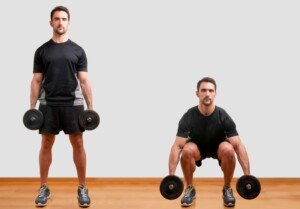
Dumbbell deadlift or squat. Never let your back become rounded. Shutterstock/ruigsantos
Some people think of this as a dumbbell squat, but this may depend on how you pick up the dumbbells.
I pick them up at my sides (palms facing each other) rather than in front of my feet (palms facing my front).
So it’s actually a hybrid of a deadlift and squat.
I’ve always gone for five, ultra-heavy reps, touching the weights down to the floor only barely in between the reps.
I rise back up explosively. What’s amazing about this exercise is that you need do only two sets, even just one, per week, to reap benefits.
The Squat
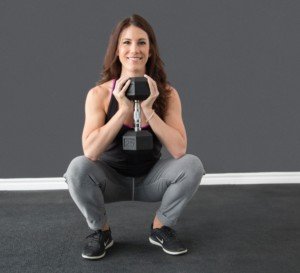
A type of dumbbell squat. I love doing these. They make your legs, knees and core so strong! Always keep your feet FLAT on the floor as you rise up and down. As you rise, avoid lurching forward; keep your back as straight as possible.
Any form of squat will do. I actually don’t do the back squat (barbell across the back), but I do other types.
Weighted squats build lower body strength, particularly in the quads, glutes, hamstrings and calves, which are essential for generating upward force when pulling tough vegetation.
Strong legs help maintain a stable stance and use your body efficiently instead of relying solely on your arms or back.
Squats also improve core strength and balance, reducing the risk of injury or strain during repetitive yard work.
The Kettlebell Swing
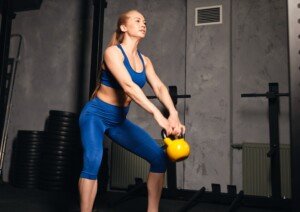
Kettlebell swing. Keep your arms straight and lift them to parallel to the floor. Always keep an arch in your lower back. Shutterstock/The Faces
Kettlebell swings develop explosive power in the hips, glutes, hamstrings and core.
This dynamic movement trains your body to hinge efficiently at the hips, protecting your lower back and improving overall posture during physical tasks.
Kettlebell swings also boost cardiovascular endurance and muscle stamina.
The motion enhances grip strength and coordination, making it easier to tackle tough roots.
In addition I recommend tire squats if your gym has a stationary tire, or single-rep lifts on a loose tire (no need to push it all the way up).
I don’t want to say “just strength train; it’ll make weed pulling a lot easier.” That’s because it’s obvious, judging by the man’s build, that he’s been doing some kind of resistance routine for quite some time – yet still finds weed pulling too taxing.
But let’s suppose he was just, for that day only, wanting to get out of pulling weeds.
There’s still a protocol for making your body fit to tackle this kind of job.
In addition to the aforementioned exercises, I also recommend the leg press, leg curl and leg extension.
Other great exercises are the lat pull-down with a neutral grip; and the seated row with a neutral and underhand grip.
Walking
Brisk “rough” walking, that is, on lumpy or natural ground rather than asphalt, will help with toughening up the hips, knees and ankles.
Adding hills will bring on even more benefits.
If you use a treadmill, do not hold on other than for a brief balance check. Remember, when you pull weeds, you won’t be holding onto anything for support.
What about the chest and shoulders?
Certainly you should include chest and shoulder workouts in a strength training regimen.
But keep in mind that being able to bench press 225 x 10 won’t do much for keeping your stamina up when pulling a lot of angry weeds.
If you find you no longer need to pull weeds due to a move or being able to hire someone, this doesn’t mean stop the exercises.
The exercises described here should be part of any kind of overall fitness program in your 50s (or any age).
It’s just that these key movements are SO effective, that doing them regularly will make you super efficient at so many of the tasks of daily (or weekly) living including shoveling heaps of snow.
 Lorra Garrick is a former personal trainer certified by the American Council on Exercise. At Bally Total Fitness, where she was also a group fitness instructor, she trained clients of all ages and abilities for fat loss and maintaining it, muscle and strength building, fitness, and improved cardiovascular and overall health.
Lorra Garrick is a former personal trainer certified by the American Council on Exercise. At Bally Total Fitness, where she was also a group fitness instructor, she trained clients of all ages and abilities for fat loss and maintaining it, muscle and strength building, fitness, and improved cardiovascular and overall health.
.

